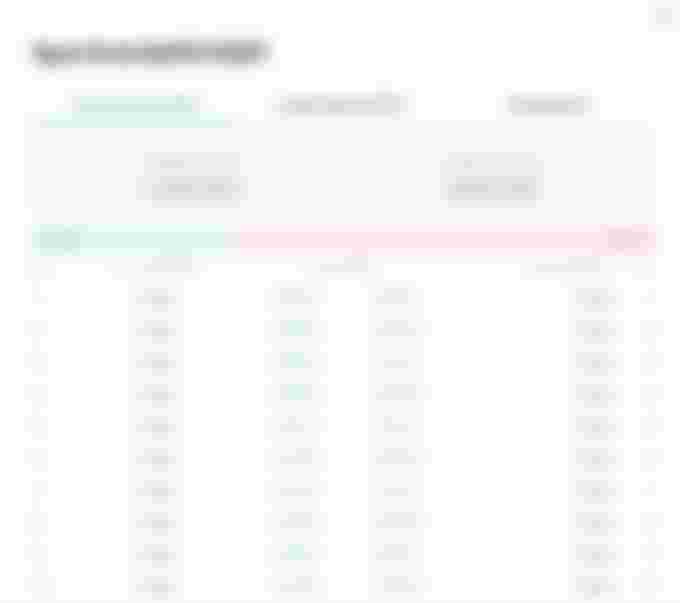Kucoin Trading Bot: The Ultimate Volatility Killer?
The idea of having trading done on an automated basis is indeed very fascinating; afterall, who doesn’t enjoy passive cashflow? A trading bot can be programmed towards this end, essentially buying assets when prices are low, and selling when prices go up. It is reasonable to say that a crypto trading bot outperforms a human trader, but with a critical flaw: it still has to be “set up” by the human and has to inherit a trading logic from experts versed both in coding and in crypto trading.

KuCoin is one of the most popular cryptocurrency exchanges today, with the company claiming that 1 in every 4 crypto traders have traded coins via their services. The Kucoin bot first debuted in early 2021, and has since undergone various upgrades to provide 6 strategies as follows currently, of which the Classic Grid strategy still remains my favourite, having withstood the test of time and price volatility.
Dynamic Rebalancing
Infinity Grid
Margin Grid
DCA (Dollar Cost Average)
Futures Grid
Classic Grid

Terminologies explained
We will take a look at the terminologies commonly encountered in trading bots, using the classic grid as an example as below.

Arbitrage refers to the number of trades being executed. Using the example of the AAVE coin, the spot grid bot has created a certain number of buy and sell orders in grids, which will be executed when that price is achieved. It has executed 41 trades in the past 24 hours, with a total number of 1092 trades ever since the initiation of the bot some 24 days ago.

Grid Profits refers to profits gained from the bot buying low and selling high, essentially executing the grid orders as above.
Floating PNL (profit and loss) is the price difference between the average purchase price of the asset, and the current market value of the said asset.

In the example of a cryptocurrency X above, when the price of X rose from 3 USDT to 10 USDT, the bot will be completing the sell order at 4 USDT, 5 USDT, 6 USDT, 7 USDT, 8 USDT, 9 USDT and 10 USDT respectively to take the profit. Immediately after the price drops to 4 USDT, the bot will execute the buy order at 9 USDT, 8 USDT, 7 USDT, 6 USDT, 5 USDT and 4 USDT. As such, the average purchase price of X is now (10+3)/2 = 6.5USDT.
Total profits simply reflects the addition of the floating PNL and the grid profits — it is the actual amount of profit that will be realized if the bot is closed at that moment.
Grid APR shows the annualized earning rates generated by the grid; whilst the APR (below the grid APR) is simply the overall APR of the bot, taking into account both the profits generated by the grid and the floating PNL — this generally improves with market conditions.
Current and entry prices are self explanatory; however in the example of the AAVE trading bot shown above, the entry price has been slashed across, as an additional investment has been made after the initial creation of the bot, thus invalidating the initial entry price. This is a strategy that can be done when the market dips, to increase profits from buying low.
A Volatility Killer
Volatility is an inherent part of cryptocurrency; it brings as much excitement as it does anxiety when prices swing in unfavorable directions. With Kucoin trading bots, the profits generated by the bots hedge against volatility, providing a certain degree of buffer against losses incurred from depreciation in the price of an asset.
Take the following trading bot using SOL as an example, which is my longest-standing trading bot on kucoin so far. I initially entered into the trade 4 months ago, when the price of SOL was relatively high at 205USDT.

My current holdings stand at 0.478 SOL and 15.68USDT.

Despite the ‘DCA’ endeavours by the trading bot which tirelessly executes buy orders when the price dips, it cannot be doubted that the value of my purchased SOL has depreciated with the dip in price from 205USDT to the now 139USDT. This is reflected by the floating PNL of -14USDT; indeed this is the price difference of purchasing 0.4788SOL at 205USDT back then vs purchasing it relatively cheaper now at 139USDT, hence reflecting losses. However, thanks to the grid profits that the bot has generated by buying low and selling high during this period of time, the decrement in the value of the asset is somewhat buffered as such — overall, taking into account the current lowered price of SOL, this bot is in fact generating a profit of 1.16USDT. It goes without saying, that when the price of SOL picks up in the near future, the bot profits (APR and grid APR) will quickly rise, as the floating PNL now would be positive and contribute to total earnings in addition to the grid profits.
Earn passive income with Kucoin’s trading bot

Diversifying your sources of income is one of the first stops on the road to financial independence. If you manage to earn passive income from various sources, you’ll be more financially resilient, and market crises and fluctuations won’t cause that much trouble. Kucoin’s bot is a perfect source of passive income. As soon as you set it up, the bot will do the work for you. From there on, it all depends on the behavior of the market.
Some commonly asked questions
What are the fees involved?
Kucoin charges no fees for creation or maintenance of the bots; only trading fees which are 0.08% in amount.
How many bots can I run simultaneously?
10
Is Kucoin Trading Bot reliable?
In general, Kucoin’s trading bot can be described as reliable. Just like any other trading bot, it does what it’s told. Its performance, therefore, depends primarily on the settings chosen and on the movements of the market during the chosen period. However, the bot doesn’t support certain complex settings common for more sophisticated bots, such as the Martingale strategy.
What is the minimum amount of investment?
This varies from coin to coin, depending on popularity, demand and market cap. Smaller cap coins tend to have lower minimum investment, which can be as low as 40USDT.
Can you lose money with trading bots?
Absolutely yes, if the market goes down. However this is often temporary, as a dip presents a buying opportunity for the bot, unless of course it is a massive market crash, in which case losses may exceed gains.
Can I use the crypto trading bot in all market conditions?
Unfortunately no — if the price rapidly rises or falls, the use of a bot becomes ineffective, and in some instances unprofitable. The bot is most effective if used in a swing or neutral market — it can then buy and sell, and repeat the process.
What happens if the price moves above or below the range of the bot?
Taking the BTC / USDT as an example, if the price breaks the upper border of your bot, then all BTC will be sold and you will be left with realized USDT. If the price crosses the lower border, then all of the buy orders for BTC will be fully executed. The bot leaves sell orders in the designated range for the price to come back. In both scenarios, the bot becomes idle and will resume its activity when the price returns to the accepted range. Alternatively, the price range over which the bot operates can be adjusted to suit dynamic market conditions.
How does the number of grids affect profit?
The number of grids in your price range will directly affect the % earnings for each grid. Determining the optimal amount depends on your trading style and budget. If you prefer to complete frequent trades with small profit % and guarantee the probability of filling orders — then increase the number of grids. In case your budget is limited or you want to receive more profit % per grid at the costs of lowering the chances of your orders get filled — then decrease the number of grids. An ideal balance profit per grid is between 0.5% and 2%.
Watch my youtube video below for a mini tutorial on how to create a trading bot on Kucoin.
Sign up for Kucoin today and start enjoying passive income, on autopilot!

As always this is not financial advice! But just some cryptocurrency investment platforms I am currently using and have found worthy of sharing with. Do your own research before investing and never deposit money you cannot afford to lose.
Feel free to ask me any questions below.
If you liked this article, follow & subscribe!
If you would like to see more content like this, you can support me by using one or more of my affiliate links below:
🎁 Cakedefi Get $50 with $50 deposit
🎁 Nexo Get $25 with $100 deposit
🎁 BlockFi Get $10 (US)/ $40 (non US resident) with $100 deposit
🎁 Celcius Get $50 in BTC with $400 deposit
🎁 Kucoin
🎁 Huobi
For Malaysian investors
🎁 Stashaway Get free investing for 6 months!
🎁 Wahed referral code ‘KENLIE1’ RM10 bonus
🎁 Capbay P2P referral code ‘8879c6’ RM100 bonus
Connect with me on
💡 Medium
💡 Youtube









Your article is good but I really don't like bots! but I'm happy with your results